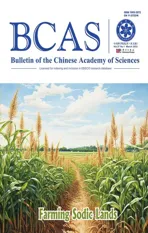Groundbreaking Study Sheds Light on Germline Mutation Rates Across Vertebrate Species
2023-09-09ByYANFushengStaffReporter
By YAN Fusheng (Staff Reporter)
A recent collaborative study between researchers from Denmark and China has provided new insights into the rates of germline mutations in 68 vertebrate animal species.These genetic changes,passed from parents to their offspring, play a crucial role in species evolution.The research not only reveals variation in germline mutation rates across species but also explores correlations with life-history traits and helps us understand how species evolve at different mutation rates.
In this groundbreaking study, published in the journalNatureon March 1, 2023, the researchers analyzed 151 mother-father-offspring trios across various species, including fish, reptiles, birds, and mammals.Using a bioinformatics pipeline, they compared the genomic information of parents and their offspring to detect germline mutations that occurred between generations in each species.
The study discovered a 40-fold variation in germline mutation rates (GMRs) per generation among the species analyzed, with birds displaying the largest variation.Although this may seem like a significant difference, the study’s first author, Lucie A.Bergeron,explains that “given the huge differences in lifehistory traits between these species, 40 times is not a huge number.Vertebrates have a relatively similar mechanism to trigger DNA mutations in germ cells.”
Male-driven Evolution Hypothesis
One theory explored in this study is the maledriven evolution hypothesis, also known as the “male mutation bias.”This theory suggests that the rate of mutation in the male germline is higher than that in the female germline, as males generally require a higher number of cell divisions to produce sperm cells.Consequently, the male germline contributes more to the genetic variation in a population.The research findings support this theory, with a higher percentage of new mutations in offspring originating from the father’s germ cells in both birds and mammals.
Correlations with Life-history Traits
The study also discovered correlations between GMR evolution and certain life-history traits,including generation time, age of sexual maturity, and fecundity.Species with longer generation times and fewer offspring per generation tended to have higher GMRs per generation.In artificially raised animals,domesticated varieties have a higher average annual mutation rate in germ cells than their wild cousins due to the lower reproductive age suitable for reproduction.These findings suggest that GMRs evolve and interact with other life-history traits, shedding light on how and why species evolve at different mutation rates.

Variation in germline mutation rates and association with life-history traits across 68 vertebrate species.(Image by ZHANG Guojie’s group)
“The mutations of DNA in germ cells are the biggest source to fuel the evolution of a species.The mutation rate affects the evolutionary potential of species and has an important impact on the production of new beneficial or adverse traits of species,”explained ZHANG in an interview.“Our research shows that the mutation rate is different among species like other biological traits, and it will also be affected by other biological traits during evolution.”
Limitations and Future Research Directions
“Although our analysis was large, the sample size is still a limiting factor.For 39 species, we had only one trio available,”says the researchers.“Moreover, for some of the species, the age of the parents at reproduction was unknown.These gaps in knowledge limited the estimation of variation of GMR at generation time for each species and prevented a full investigation of the rate of mutation accumulation with parental age.”
The researchers reckon that it would be interesting to explore GMR variation among individuals of the same species and address whether or how the selection pressure on germline mutations affects the accumulation of somatic mutations.
In summary, this pioneering study offers invaluable insights into germline mutation rates among vertebrate species, enriching our comprehension of species evolution and the factors that influence mutation rates.Continued research in this field holds the promise of broadening our understanding of evolutionary biology,as well as unraveling the intricate connections between life-history traits and genetic variation.

The blue-throated macaw (Ara glaucogularis) shows strong male bias concerning the contribution to germline mutations.(Image by Ted, CC BY-SA 2.0, https://commons.wikimedia.org/w/index.php?curid=8222229)
